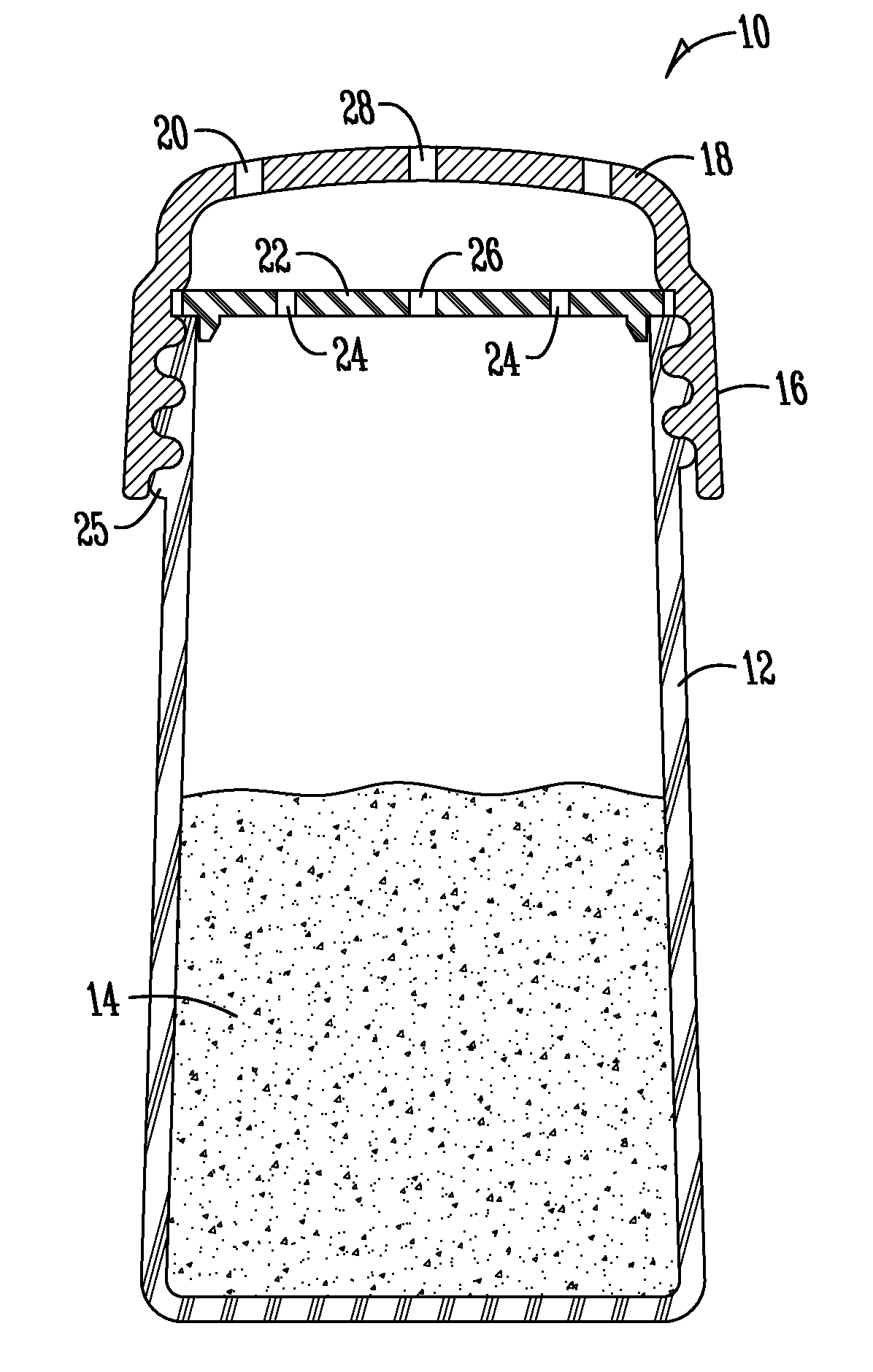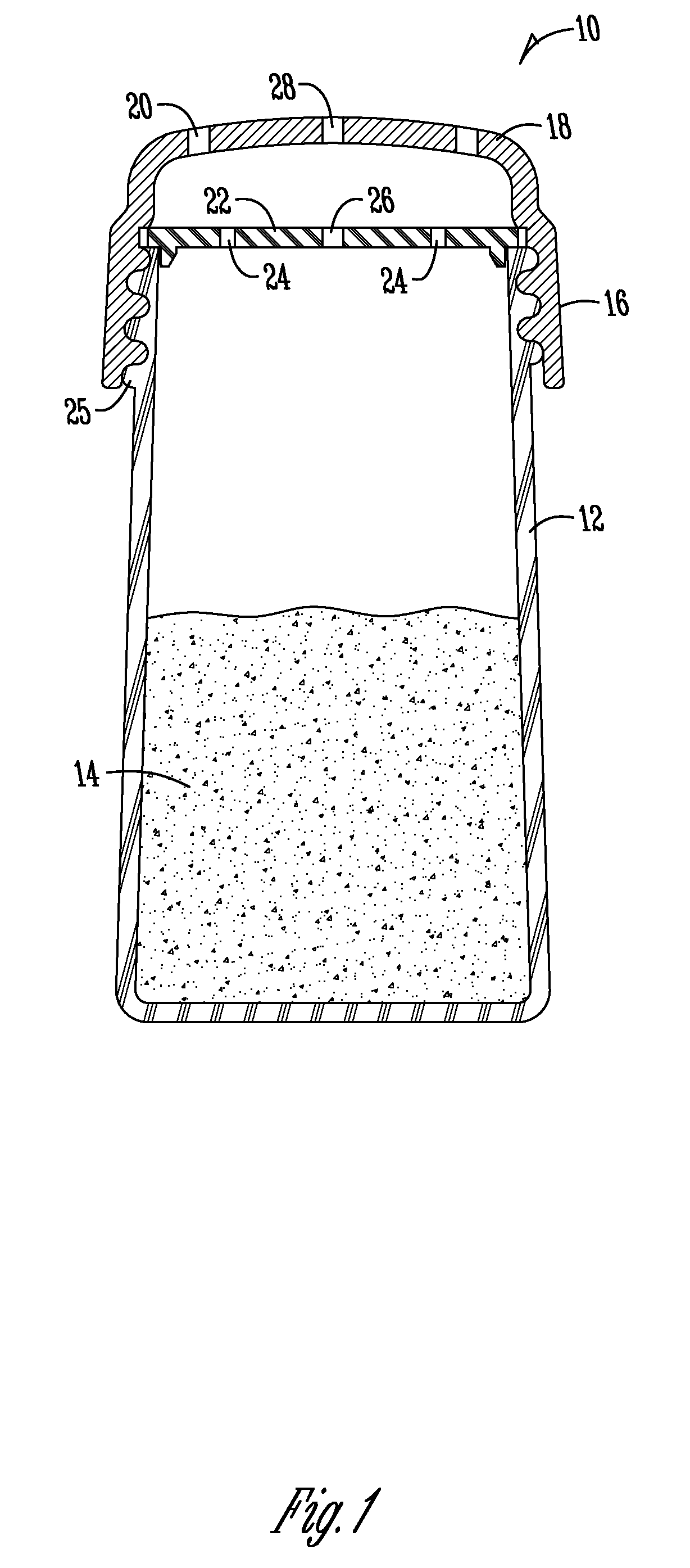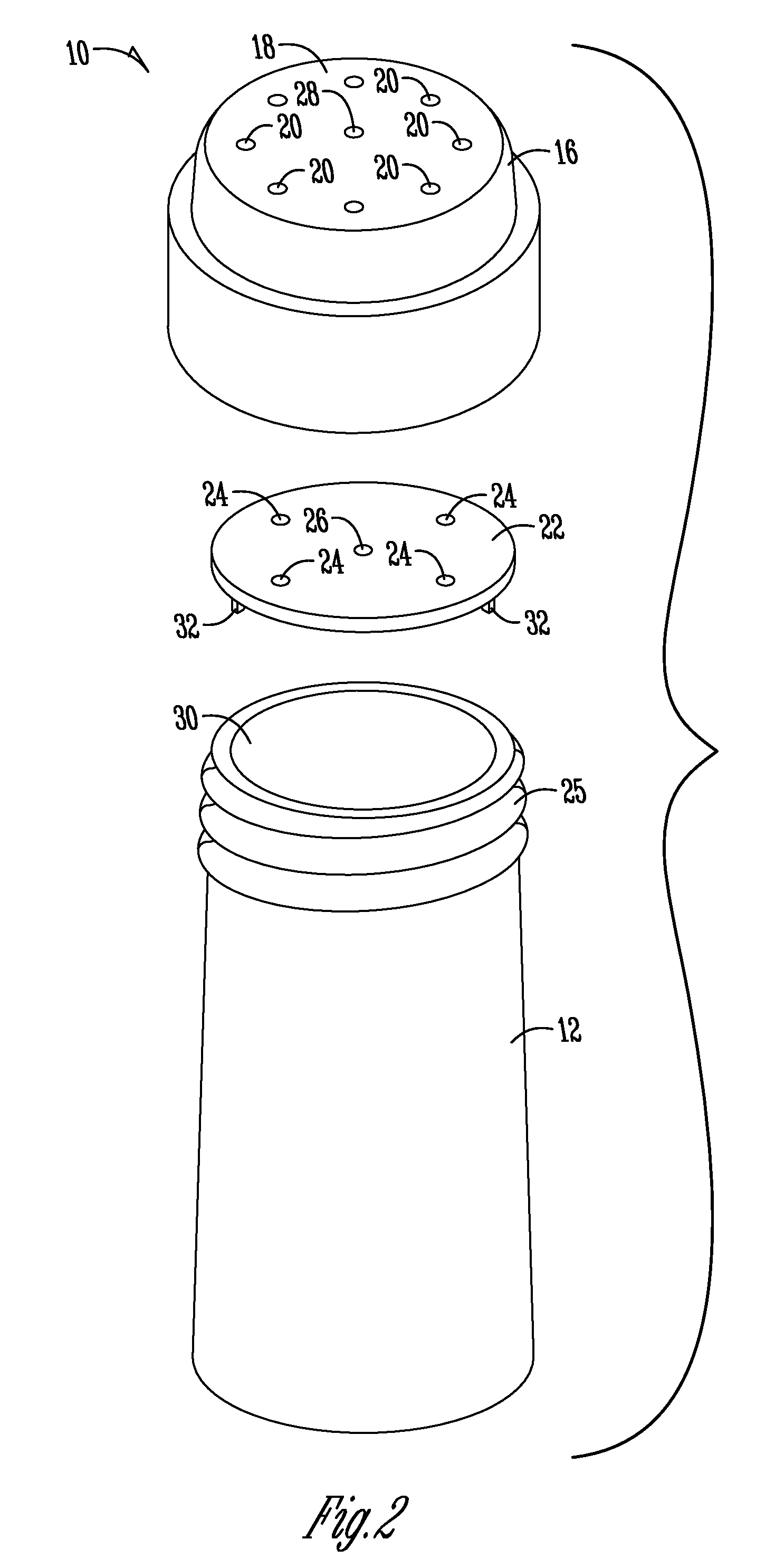Reduced flow salt shaker
a shaker and salt technology, applied in the field of shakers of salt, sugar, spices, etc., can solve the problems of clumping, people to become accustomed to a very salty taste, and standard shakers provide too much salt per shake, etc., to avoid clumping, easy filling, cleaning and storage
- Summary
- Abstract
- Description
- Claims
- Application Information
AI Technical Summary
Benefits of technology
Problems solved by technology
Method used
Image
Examples
Embodiment Construction
[0025]FIG. 1 shows a cross-sectional view of a dispenser 10 according to one embodiment of the present invention. FIG. 2 shows an exploded view of the dispenser 10 from FIG. 1. As seen in FIGS. 1 and 2, the dispenser 10 includes a container 12 that is an open-ended receptacle for holding granulated material 14 such as salt, sugar, spices, or the like. The dispensers disclosed herein may also be suitable for use with viscous fluids such as syrup, honey, or glazes. Such containers are commonly made of glass or plastic, but may be constructed of various materials, including metal, wood, or ceramic. A cap 16 affixes to the open end of container 12 using a screw thread 25, snap fit, or other suitable means known in the art. Preferably cap 16 will be removable from the container 12, to permit filling the container 12 with the granulated material 14, although the invention will work with embodiments where the cap is not removable such as where the cap and container are formed from a single...
PUM
 Login to View More
Login to View More Abstract
Description
Claims
Application Information
 Login to View More
Login to View More - R&D
- Intellectual Property
- Life Sciences
- Materials
- Tech Scout
- Unparalleled Data Quality
- Higher Quality Content
- 60% Fewer Hallucinations
Browse by: Latest US Patents, China's latest patents, Technical Efficacy Thesaurus, Application Domain, Technology Topic, Popular Technical Reports.
© 2025 PatSnap. All rights reserved.Legal|Privacy policy|Modern Slavery Act Transparency Statement|Sitemap|About US| Contact US: help@patsnap.com



